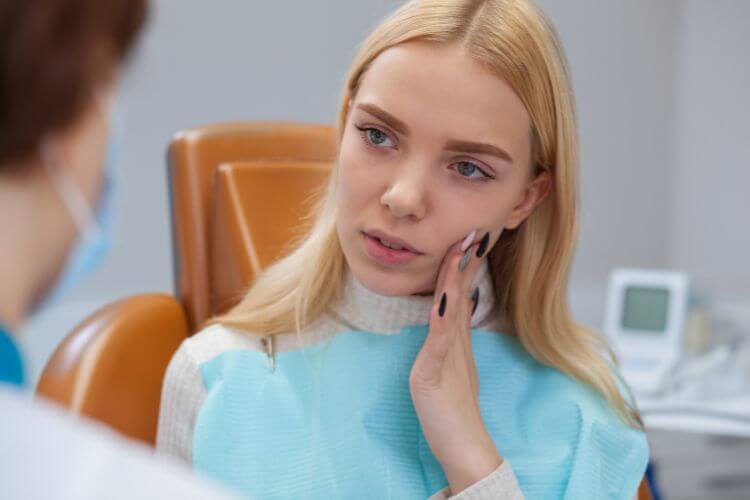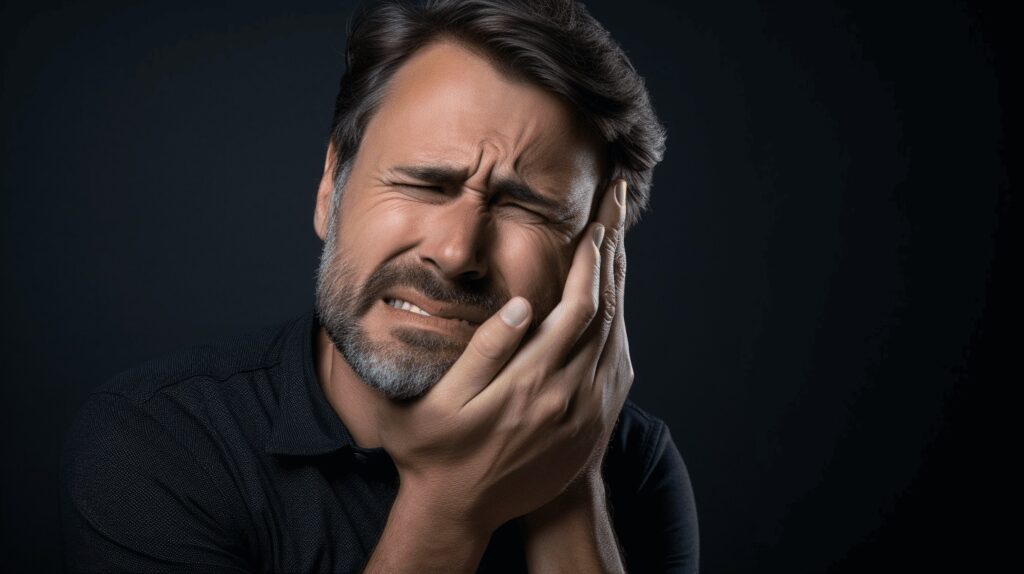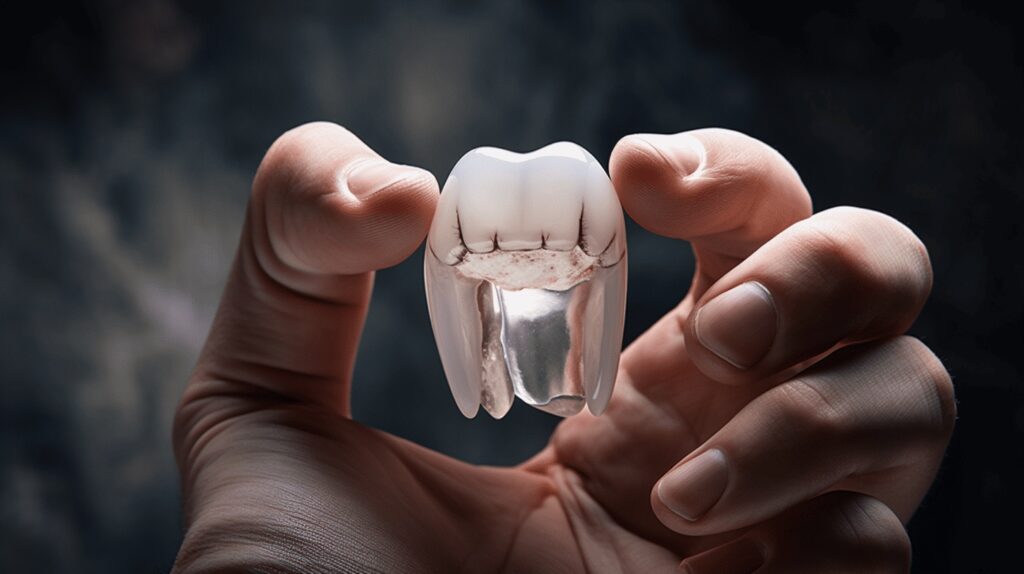Welcome to your comprehensive guide on tackling dental emergencies!
Many of us have experienced the sudden agony of a toothache, the unexpected loss of a filling, or the panic of a knocked-out tooth. During these stressful moments, it is essential to remember that dental emergencies, regardless of their nature, require quick and effective solutions.
Through this guide, we’ll share insights into the prevalence and common types of dental emergencies, as well as provide tips on managing dental health.
From real-time data statistics to trends, and even what to do when facing a dental emergency, we’ve got you covered!
Remember, while these incidents can be frightening, knowledge is power.
Let’s empower ourselves about these sudden troubling situations today, so we can act with confidence tomorrow.
Table of Contents
Prevalence of Dental Emergencies
What was your first response the last time you witnessed a toothache?
If it involved contemplating an immediate visit to the dental office or rustling through your medicine cabinet for some good old painkiller, then congrats, you’re part of the vast majority. But dental emergencies are much more common than many of us might initially think.
Dental Emergencies in Schools
You certainly remember your elementary school nurse, don’t you? Well, they probably remember all the dental emergencies too!
Astonishingly, across the globe, a whopping 34 million school hours are lost each year due to unplanned dental care. 😱
Think about that for a second. That’s equivalent to almost 3,500 years of educative, creative play, fascinating facts, and mathematical miracles. Yes, dental emergencies impact our youngster’s academic life and routine more than we often realize!
Dental Emergencies in the US
Let’s take a walk around the United States now shall we? Our own country reported over 2 million dental-related emergency department visits in 2018. 😮
That rounds up to approximately an average of 615.5 visits per 100,000 population. That’s a huge number! Moreover, due to these unforeseen dental issues, a significant $45 billion in US productivity is lost annually.
Never underestimate the power of a tiny toothache; it sure does influence economic dynamics, doesn’t it?
Dental Emergencies amongst Teenagers in Texas
We’ve all heard about the ‘Everything is bigger in Texas’ claim. Unfortunately, dental emergencies amongst teenagers seem to follow suit too.
Research reveals that 7.2% of teenagers in this great state reported visiting emergency rooms for dental emergencies. That’s quite an alarming number, making it clear that dental problems are not just an adult issue.
Untreated Dental Caries
And now for the climax of this journey – untreated dental caries. It seems that an average of 13.2% of children aged 5-19 and a heart-breaking 25.9% of adults aged 20-44 have untreated dental caries. Quite a painful fact isn’t it?
The prevalence of dental emergencies makes it clear that they are not just minor issues that can be shrugged off. They pose significant challenges to education, national productivity, and general health.
These statistics paint a dire picture, elucidating the fact that more attention needs to be directed towards emergency preparedness, preventive measures, and, most importantly, awareness about oral health.
As we step up to the plate to battle this dental crisis, let’s ensure we arm ourselves with the best of oral hygiene practices, regular checks, and professional consultation. Here’s to cleaner, stronger teeth and brighter smiles! 🦷
Global Dental Health Statistics
Your dental health may seem like a minor part of your overall wellness, but it plays a much larger role than many realize. When we crunch into an apple, break bread at dinner, or sip a refreshing drink, we are utilizing our teeth.
They’re essential companions in our daily life, providing us with the simple joy of enjoying flavors from around the world.
However, the prevalence of oral diseases globally is shocking. You might be surprised to learn that approximately 3.5 billion people suffer from oral diseases across the globe 👀.
Let’s take a closer look at this statistic to better understand the gravity of the situation:
- Approximately 3.5 billion: That’s nearly half the world’s current population. Can you imagine? Almost every second person you meet may be dealing with some form of oral disease. It’s a startling revelation that emphasizes the incredible importance of proper dental care.
There’s no doubt that oral health is a paramount concern. However, the current global statistics suggest that we might be neglecting this crucial aspect of our wellbeing more than we should.
Here’s a quick comparison table:
| Global Population | People with Oral Diseases |
|---|---|
| 7.8 Billion | 3.5 Billion |
The figures speak for themselves, don’t they 😲? It’s crucial to understand that this issue touches all corners of the globe. From the crowded cities of New York and Hong Kong to the remote villages in Africa and the Amazon, oral diseases know no boundaries.
“Oral health is a critical component of health and must be included in the provision of health care and design of community programs.” – World Health Organization
These statistics are a wake-up call for all of us to focus on the health and well-being of our mouth and teeth. Ensuring optimal oral health doesn’t just mean a bright, confident smile.
It can also prevent a host of other health issues linked to poor dental hygiene. So, let’s all start demonstrating a greater concern for our dental health.
After all, a healthy smile is a universal language we all can understand. 😊
Patient Behavior and Dentist Visits
When it comes to talking about dental health, there’s no taking a back seat; it’s an issue that commands as much attention as overall health.
However, patient behavior towards dentist visits often seems a little casual. But it’s not about fearing the drill or the chair; there’s more to it. Today, let’s unravel the story behind those missed dentist checkups and see what statistics convey about patients’ attitudes towards them.
So, bring out your “health book” and let’s dive in!
Dentist Visits in a Pandemic
Picturing a year ago, we all would shudder and cringe at the thought of the dreaded pandemic that was laying its foundation in our lives. It brought along uncertainty, fear, and a ton of questions health-wise.
The intriguing part? Some 63% of patients were still willing to visit a dentist during the pandemic, with 27% already having done so. 🦷
You’re probably wondering: how can the proportion be so high during such trying times? Great question!
This surprising number may be due to patients weighing the potential consequences of neglecting their dental health. Issues like tooth decay, gum disease, or even oral cancer could spread far beyond a ripple effect if left unattended.
Going to the dentist, for many, was a risk worth taking.
Frequency of Dental Visits
“Yearly dentist visits? Oh no, it’s just a suggestion” – if you’ve ever found yourself saying this, you aren’t alone. It seems like the frequency of dental visits is often taken lightly amongst adults, with only 52% actually visiting the dentist as often as recommended.
So, why the laissez-faire attitude?
The list of potential reasons could fill this page: fear of the dentist, lack of time, or even the simple feeling that “nothing hurts, so why should I go?”. But remember, folks, preventive care is better than cure!
Mastering healthy dental habits and routine check-ups can pave the way for a healthier mouth. It all starts with your understanding and acceptance of the importance of oral health in your overall wellbeing.
So, next time you’re about to skip that dentist appointment, take a moment and think about the potential consequences. There’s more at stake than just your beautiful smile; it’s about your overall health. Visit your dentist regularly and let’s change these statistics together! 🦷👩⚕️
Oral Health Conditions Common in the United States
A radiant smile is a truly powerful asset, and, guess what, your oral health plays a fundamental role in preserving that attractive quality. But contrary to what your mirror might display, many adults in the United States are struggling with unseen dental issues.
From untreated cavities to gum disease, our teeth are under constant threats that can impact not only our smiles but overall health as well. Ergo, understanding these common health conditions can play a significant part in maintaining our oral wellness.
Let’s dive into the depths of the most prevalent oral health conditions that are giving a tough time to Americans coast to coast.
Signs of Gum Disease
By the age of 30, it’s quite alarming to learn that half of American adults are showing signs of gum disease. Gum disease can range from simple gum inflammation to a severe infection, leading to major damage to the soft tissue and bone that supports your teeth.
Some indicators of gum disease include swollen, red or tender gums, bleeding during brushing or flossing, persistent bad breath, and loosening or shifting of your teeth. Regular dental check-ups can help catch these signs early and keep your gums in tip-top shape.
Untreated Cavities
Tooth decay might just seem like a trivial childhood problem, but did you know 1 in 4 adults in the US actually has untreated cavities? Undetected and untreated, cavities can lead to severe pain, infection, and even tooth loss.
Symptoms often include toothaches, sensitivity to hot and cold, and visible holes or pits in your teeth. But don’t despair, with regular dental visits and good oral hygiene, untreated cavities can be entirely preventable.
Periodontal Disease
And the struggle doesn’t end there. Imagine nearly 65 million American adults battling some form of periodontal disease.
This range of conditions includes everything from gingivitis to advanced periodontitis, with symptoms like bad breath that won’t go away, red or swollen gums, tender or bleeding gums, painful chewing, and even loose teeth.
This disease is not merely a matter of oral hygiene; it’s also linked with increased risks for heart disease and stroke. 😦
While these statistics are concerning, remember that proper oral hygiene, along with regular dentist visits, can keep these oral health conditions at bay.
By age 17, nearly 80% of Americans will experience at least one cavity, but with your bright smile as motivation, let’s aim to keep that number as low as possible! Though the odds might seem high, together we can chomp down on the threats to our oral health.
Cost Impact of Dental Emergencies
Crunching on an ice cube, munching a piece of candy, or even the seemingly harmless act of brushing – almost anything could end up causing a surprising and painful dental emergency.
But have you ever paused to consider the cost implications of these incidents? Unexpected dental emergencies not only play havoc with our physical well-being and daily routine, but they also leave a rather significant dent in our pocketbooks.
Examining the fiscal impact of these emergencies is essential, as it provides an understanding of their long-term implications.
It is striking to note that atraumatic dental pain accounts for 1.8% of all emergency department visits. With this figure in mind, it is no surprise that these incidents cost us upwards of $2.4 billion annually.
Imagine what we could achieve if we directed these funds towards preventive dental care or other pressing public health issues!
Moreover, on another note, nontraumatic dental problems also account for 1.5% of all emergency department visits in the US. This percentage equates to a staggering two million visits a year. Transferring our focus towards prevention and early detection of dental issues could drastically decrease these figures.
Here’s a quick snapshot of the facts:
- Atraumatic dental pain makes up 1.8% of all ED visits.
- This number leads to an annual expenditure of $2.4 billion.
- Nontraumatic dental issues comprise 1.5% of all ED visits.
- That figure amounts to two million visits each year.
As we can see, the financial burden of dental emergencies is alarmingly substantial. It’s an urgent wake-up call for us all to spend more time brushing up on oral health literacy and investing wisely in preventive dental healthcare.
After all, who wouldn’t prefer a routine check-up rather than the unanticipated trip to the emergency room?
Reducing these numbers is more than just an individual responsibility. It calls for systemic changes, proper dental hygiene education, and increased accessibility to quality dental care for all.
By addressing these issues on a collective level, we’ll not only safeguard our smiles but also our economies. Together, let’s change the narrative of dental health and move towards a future where dental emergencies are few and far-between!
Age Group with the Highest Emergency Dental Visits
A smile can brighten up any room, but maintaining those pearly whites is no laughing matter. Ever wonder which age group most frequently finds themselves under the bright lights of an emergency dentist? Spoiler alert: It’s not who you might think!
While we might anticipate the older crowd racing to dentists with a tooth emergency, the title of most frequent dentist-visitors actually goes to children, specifically those between the ages of 5 and 9. Out of 10,000 people, this demographic tops the list for the highest number of emergency dental visits. Surprised? We were too! 🙀
Why children, you ask? There are several reasons, and they’re not just about sugar-laden candies:
- First, this age group is in the thick of losing baby teeth and growing permanent ones, a process that can sometimes bring complications requiring immediate attention.
- Secondly, children are most exposed to sports and playtime injuries, increasing the chances of dental emergencies.
- Lastly, youngsters are not as adept at maintaining dental hygiene as adults, which can often lead to acute issues demanding urgent dental care.
Nonetheless, the silver lining here is the custom of regular visits. Though they’re often for emergencies, early interactions with dentists can educate children about the importance of oral care, shaping their habits as they grow older, and hopefully contributing to a lower rate of dental emergencies in their adult years.
So, every cloud does have a dental-floss thin silver lining, doesn’t it? 😅
All in all, while it’s concerning that the 5-9 age group crowns the highest number of emergency dentist visits, it’s a gentle reminder for us to always be vigilant about children’s dental health. After all, our charming smiles stem from the roots of early, proper dental care. 🦷 💪
Trends in Dental Emergencies
If there’s one thing you never want to deal with, it’s a dental emergency. 😖 But sometimes, despite our best efforts, trouble strikes – often when it’s least expected. Yet, recent data reveals a positive trend, a 10.9% quarterly decline in dental emergency visits from 2014 onwards – a surprising, yet welcome development.
But why the decline? 🤔 Could it be better oral care awareness, advancements in preventive dentistry, or simply fewer accidents? To fully grasp this trend, let’s break down a few potential factors.
First, let’s talk about awareness. 📢 How often have you heard the phrase “prevention is better than cure”? It turns out there’s some truth to that. The past decade, in particular, has seen a steep rise in dental health literacy. More folks are understanding the importance of regular check-ups, timely treatment, adhering to oral hygiene practices like brushing twice a day, and flossing. This collective shift in mindset might have contributed to fewer dental emergencies.
Preventive dentistry advancements also warrant discussion. 👩⚕️ Dental science has seen numerous technological breakthroughs, from digital X-rays and laser dentistry to dental 3D printing for prosthetics. Such advancements allow dentists to diagnose potential issues early, reducing the chances of last-minute crises.
Then, there’s a possible reduction in accidents causing dental trauma. 🤕 Although the data doesn’t detail the types of emergencies, it’s plausible that decreased physical recreational activities, or increased use of protective gear in sports, could have resulted in less accidental tooth loss or damage, further feeding into the overall drop in emergencies.
To quote the legendary Bob Dylan, “The times, they are a changin'”. In the world of dental health, they indeed are – and seemingly for the better. While these trends are promising, it’s essential to remember that maintaining our dental health remains our own responsibility.
So, let’s keep up with those regular check-ups, stay on top of our oral care habits, and continue to rely on our trusted dentists to guide us through.
😊 After all, a picture-perfect smile is worth all the effort, isn’t it?
What to Do in a Dental Emergency
In the hustle and bustle of everyday life, accidents can occur, and sometimes these mishaps involve our pearly whites. No one schedules unexpected toothaches or a sudden, accidental tooth extraction due to a tumble down the stairs. We understand such situations, and we’re here to guide you on what to do in a dental emergency.
Firstly, don’t panic! Easier said than done, we know, but staying calm is essential to handle the situation efficiently. 🚫😱
Next, if you’ve lost a tooth due to trauma, it’s highly important to locate the tooth promptly. But be sure to hold it by the crown, not the root. This vital piece of wisdom comes from our comprehensive guide on Handling Dental Emergencies.
Why hold it by the crown? Here’s why:
- Touching the root could potentially damage the cells necessary for reattachment.
- The crown, or the part of the tooth that’s visible in the mouth above the gum line, is designed to withstand contact, while the root is not.
- You also decrease the chance of introducing bacteria or foreign substances into the root.
Following this, rinse the tooth gently, ensuring not to scrub or remove any tissue fragments. We know how instinctive it might be to scrub it clean but resist the urge!🙅♀️
Do try and place the tooth back in its socket if possible, but never force it. If that is not possible, transport it in a small container of milk or a tooth preservation product. The objective is to keep it moist at all times.
Earliest possible intervention from a dentist, preferably within an hour, significantly increases the chances of saving the tooth.
Placing you at ease during an overwhelming situation is one of our aims. Part of that is ensuring you know exactly what to do when waiting for professional help is not an option.👨⚕️👍
Remember, how you handle a dental emergency can significantly impact the outcome. Every minute counts, but with the proper knowledge and calm demeanor, preserving your radiant smile could be just a dental toolkit away.
Conclusion
Tackling a dental emergency quickly and efficiently is the first step to preserving your oral health. From sudden toothaches, gum diseases, untreated cavities to major accidents – timely, expert intervention can make all the difference.
At Wilshire Smile Studio, we offer comprehensive emergency dental care designed to minimize pain and prevent long-term damage.
Our team is ready, dedicated to delivering exceptional, immediate assistance when you need it most. We pair our deep commitment to patient care with advanced technology and expertise to deliver the best possible results.
Dental emergencies can be challenging and stressful, but you don’t have to face them alone. Let our professionals help you navigate through the crisis and onto the road of recovery.
Keeping your teeth and gums healthy starts with regular dental checkups, where potential issues can be detected early before they become emergencies. Embrace preventive care, manage your oral health better, and enjoy a radiant, confident smile every single day.
After all, beautiful smiles start at Wilshire Smile Studio.
Remember, in the face of a dental emergency – don’t panic. Reach out, and let us take care of the rest. Here’s to a bright, healthy smile that lasts a lifetime!
Secure your free consultation with us online or call (323) DENTIST (323-336-8478) today.
Frequently Asked Questions
1. What are the common dental emergencies?
Common dental emergencies include toothaches, broken teeth, knocked-out teeth, lost fillings or crowns, and abscessed teeth.
2. What should I do in case of a toothache?
In case of a toothache, rinse your mouth with warm saltwater, floss gently to remove any trapped food, and use a cold compress on the outside of your mouth to reduce swelling. It is important to see a dentist as soon as possible.
3. How should I handle a knocked-out tooth?
If a tooth is knocked out, gently rinse it with water, holding it by the crown (not the root). Try to reinsert it into the socket, but if that’s not possible, keep the tooth moist by placing it in milk or a tooth preservation product. Seek dental care immediately.
4. What should I do if I have a broken tooth?
If you have a broken tooth, rinse your mouth with warm water and apply a cold compress to reduce swelling. Save any broken tooth fragments and see a dentist as soon as possible for proper treatment.
5. Can I temporarily fix a lost filling or crown?
Temporary fixes for lost fillings include using dental cement or sugar-free gum to cover the area. For a lost crown, you can apply dental adhesive or denture adhesive to hold it in place temporarily. However, it is essential to visit your dentist for a permanent solution.









